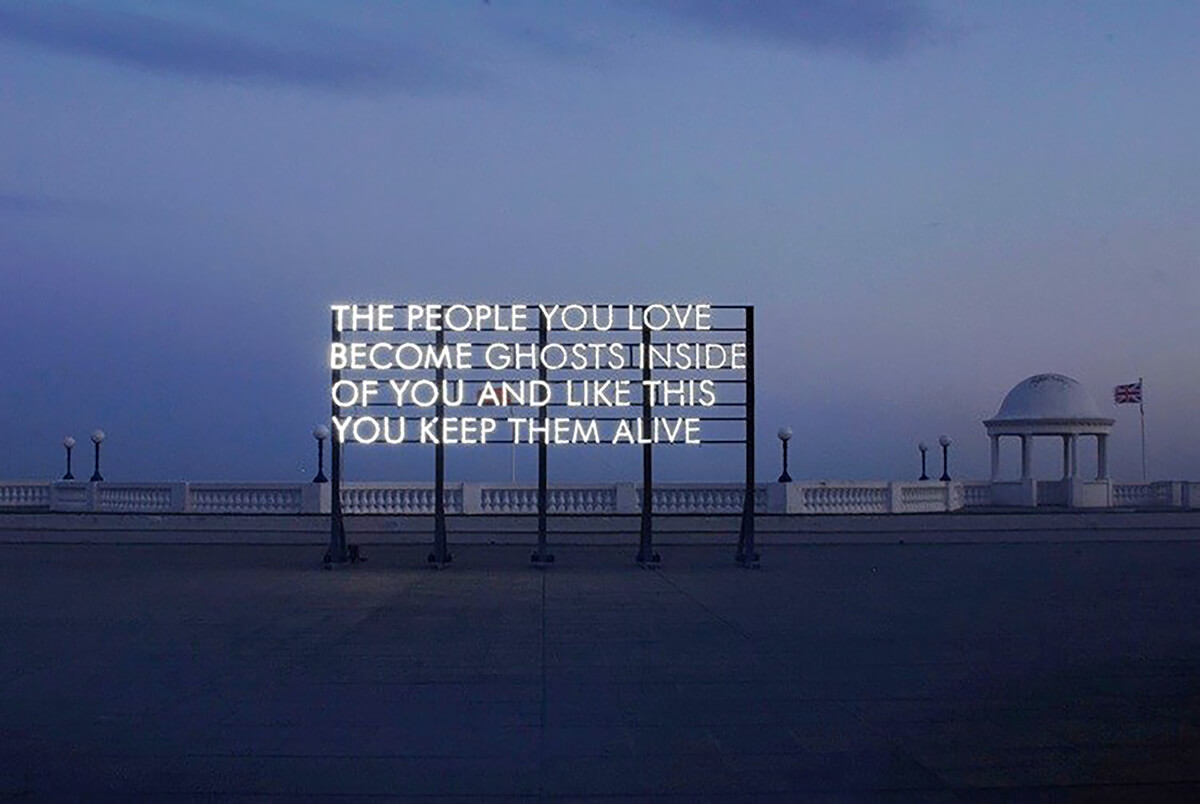
Robert Montgomery, ‘Ghost in the Machine’
For this month’s Poetry Muse Rhiannon Williams looks at four genre-bending artists in whose work art and poetry fuse in intriguing ways.
The arts often intersect – visual albums released by musicians, the use of dance in performance art, and of course text in conceptual art; beautiful melt-in-the-mouth words splashed across walls and canvases all over the world. Whether as a source of inspiration or in pride of place as a focus of artworks themselves, poetry is seen in the output of many an artist. But when is poetry a work of art, and when is art poetry? Or what is the difference between the two? Arguably the aesthetic experience of a piece of art mirrors that of a poem – each have form, composition, and are interpreted by a viewer or reader who brings their own experiences and history to the canvas or page, usually with strong emotions induced.
Follow LUX on Instagram: the.official.lux.magazine
Carlos Motta
The work of Spanish artist Carlos Motta – who had a performance piece on at Frieze this month – elucidates how the boundaries between word and image can blur. A word can be an image, while also referring through the system of language back to the image that it is, as well as being a representation of something completely different. For example, in Motta’s ‘We Who Feel Differently’ the words themselves are the art, drawing attention to their linguistic meaning through their physical size and shape and colour upon the wall, while also possessing the extra-linguistic meaning associated with what feeling ‘differently’ might entail, and who this enigmatic ‘we’ might be. In this way it is at once a work of art, and a poem, the strength of the words exemplified in a single short sentence.
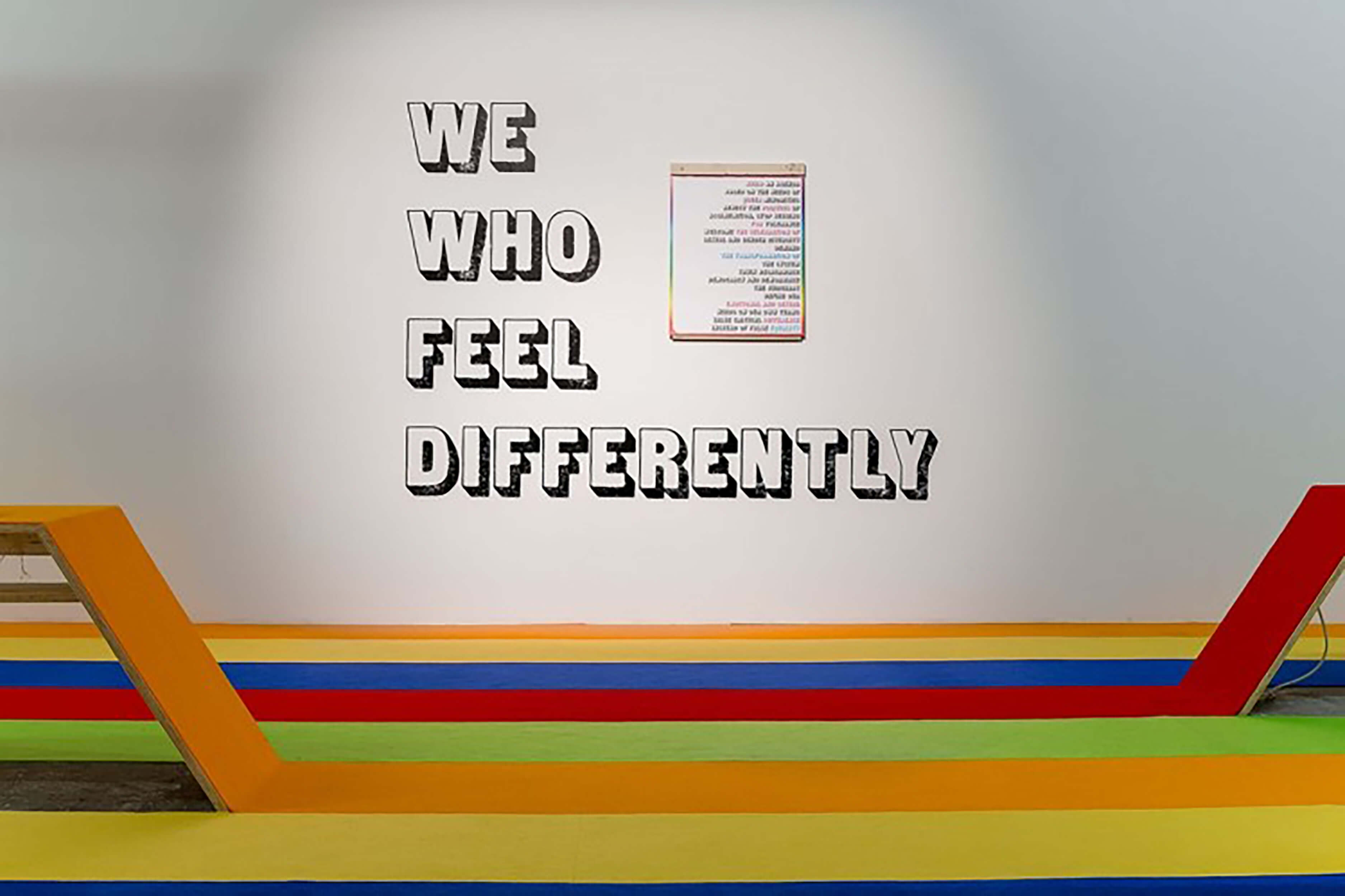
Carlos Motta, We Who Feel Differently
Robert Montgomery
Looking at it from the opposite perspective poetry is also frequently performed as art, for example Robert Montgomery’s (husband of poet Greta Bellamacina) epic ‘Ghost in the machine’ installation, erected upon an esplanade for National Poetry Day in Britain. The words ‘The people you love / become ghosts inside / of you and like this / you keep them alive’ when written as page poetry are powerful enough. But the emotional response to these words is all over again when encountered on a foggy evening, glowing with melancholia against a rough sea-sky.
Read Next: Designer Bill Bensley on creating new luxury worlds
Heather Phillipson
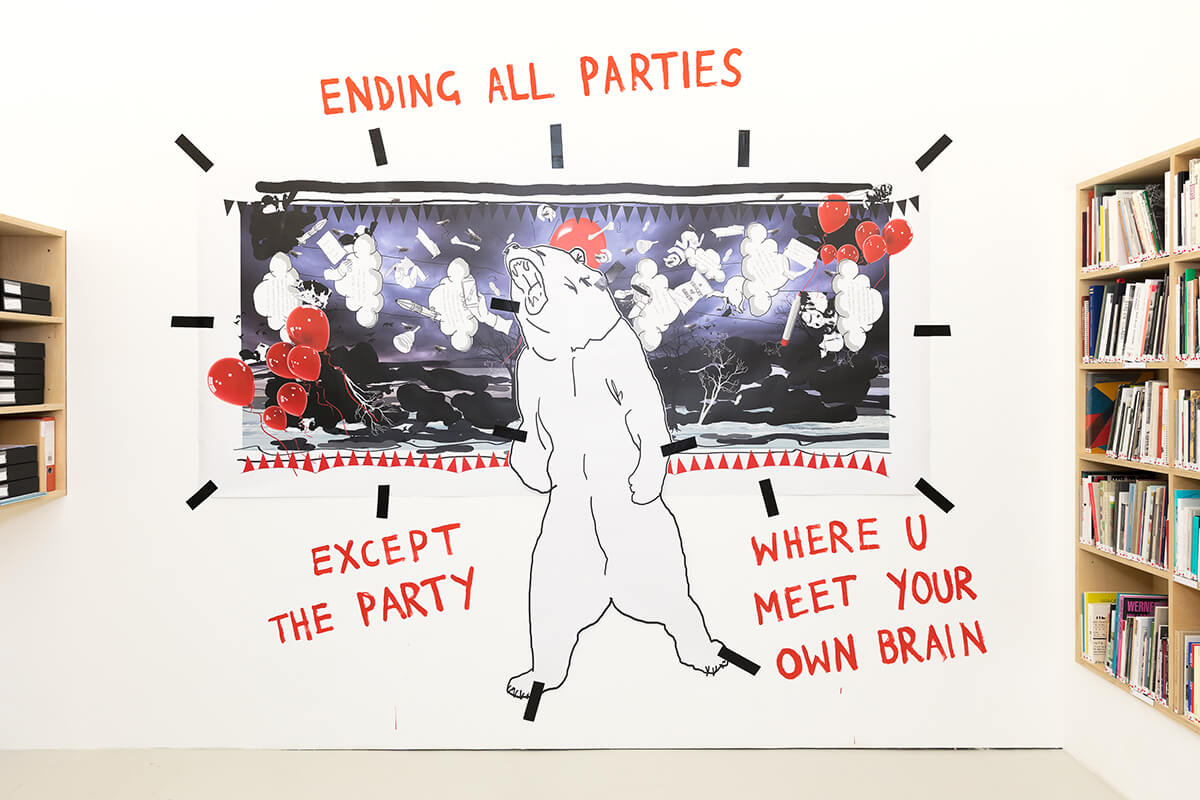
Heather Phillipson,
ENDING ALL PARTIES / EXCEPT THE PARTY / WHERE U MEET YOUR OWN BRAIN. Installation view at The Drawing Room, London, 2017. Image courtesy the artist.
Photographer: Dan Weill
Heather Phillipson is a poet who is also an artist. She has had solo exhibitions in places such as the Schirn Frankfurt and the Istanbul Biennial while at the same time being a British Next Generation poet. She describes how her ‘videos and sculptural installations behave as places, musical scores, poems and nervous systems’ demonstrating how ambiguous the definitions of each of these things are, and how arbitrarily language burdens us with meanings. In the same vein as Motta, her 2017 commission uses the power of poetry in conjunction with art to create the piece ENDING ALL PARTIES / EXCEPT THE PARTY / WHERE U MEET YOUR OWN BRAIN.
Seth Price
Seth Price is someone who works with words, code, skin, clothes, walls, metal – anything he can sink his teeth into. His art and poetry dismantles not only established routines and preconceptions, but also the clockwork of feelings. Based in New York, Price is generally considered under the label of ‘artist’ however there is an argument for the titles web developer, architect, essayist, musician, and poet – if titles such as these are particularly relevant by this point. His books of poetry subvert every expectation of what constitutes ‘poetry’ as they resemble artists’ books more than poetry books, and journal entries more than poems, playing with language in the same way that his art does. As part of his show ‘Wrok Fmaily Friedns’ an essay that he wrote entitled ‘Dispersion‘ is displayed amidst a jumble of knots, the scrambling of letters and image and physicality reflecting the disordered reality upon which a system of language tries to impose order. The essay talks about how the endless oscillation between defining something as ‘art’ or ‘not-art’ is ultimately fruitless, while in itself treading the water between each of these categories in the most clever, engaging manner. Ludwig Wittgenstein famously wrote that ‘the limits of my language mean the limits of my world’ but through Seth’s work we come to see how the limits of language may be overcome – by art.
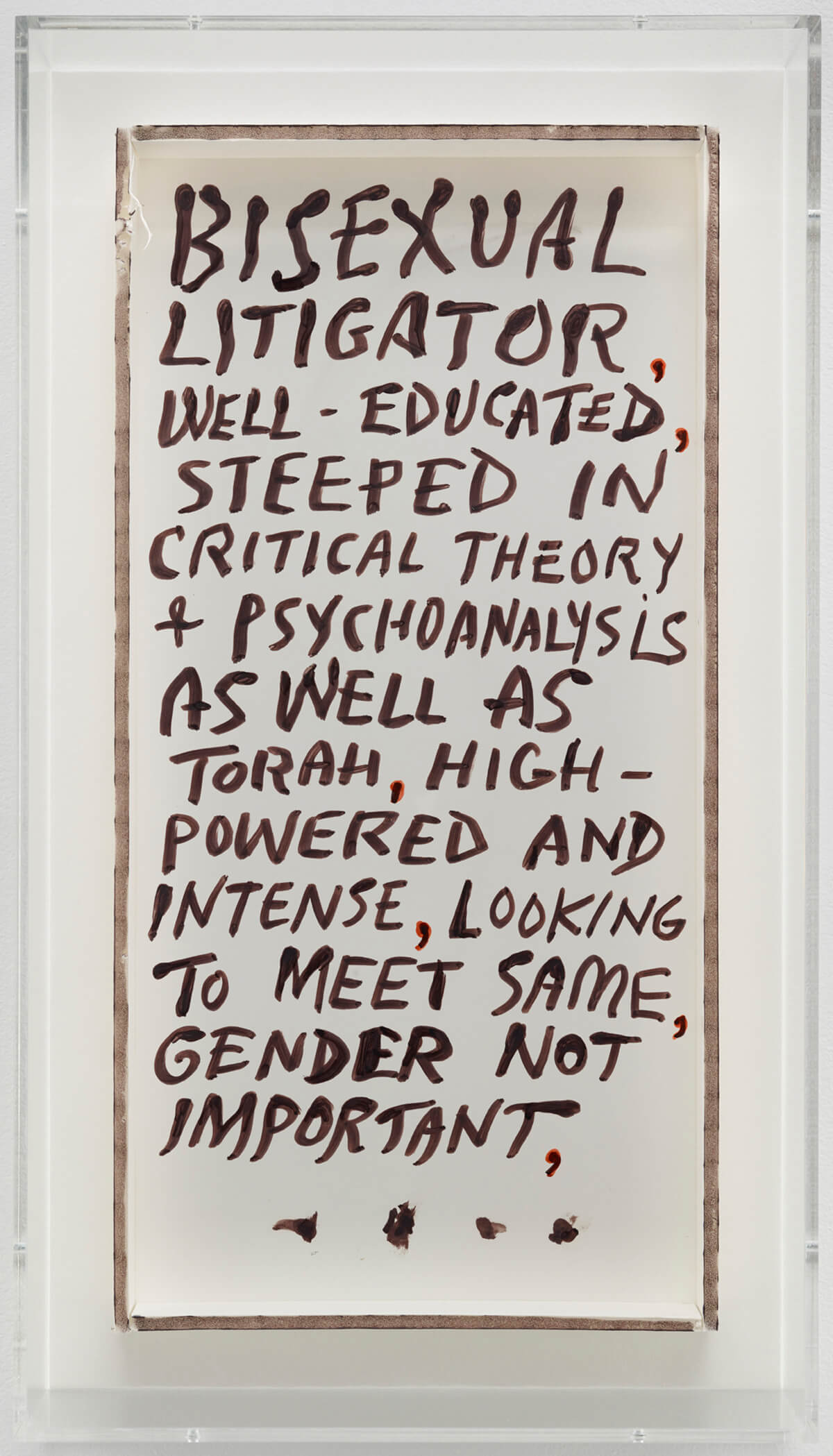
Seth Price, Bisexual Litigator 2013. Courtesy of the artist and Petzel, New York.



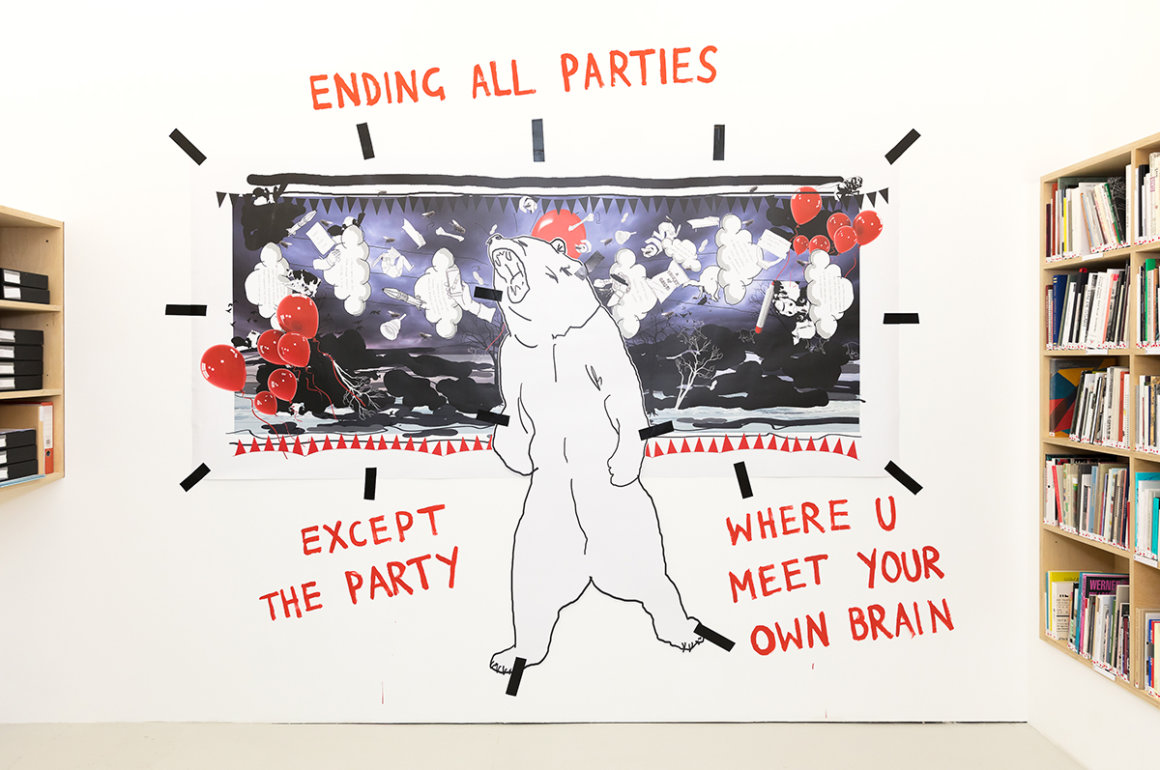
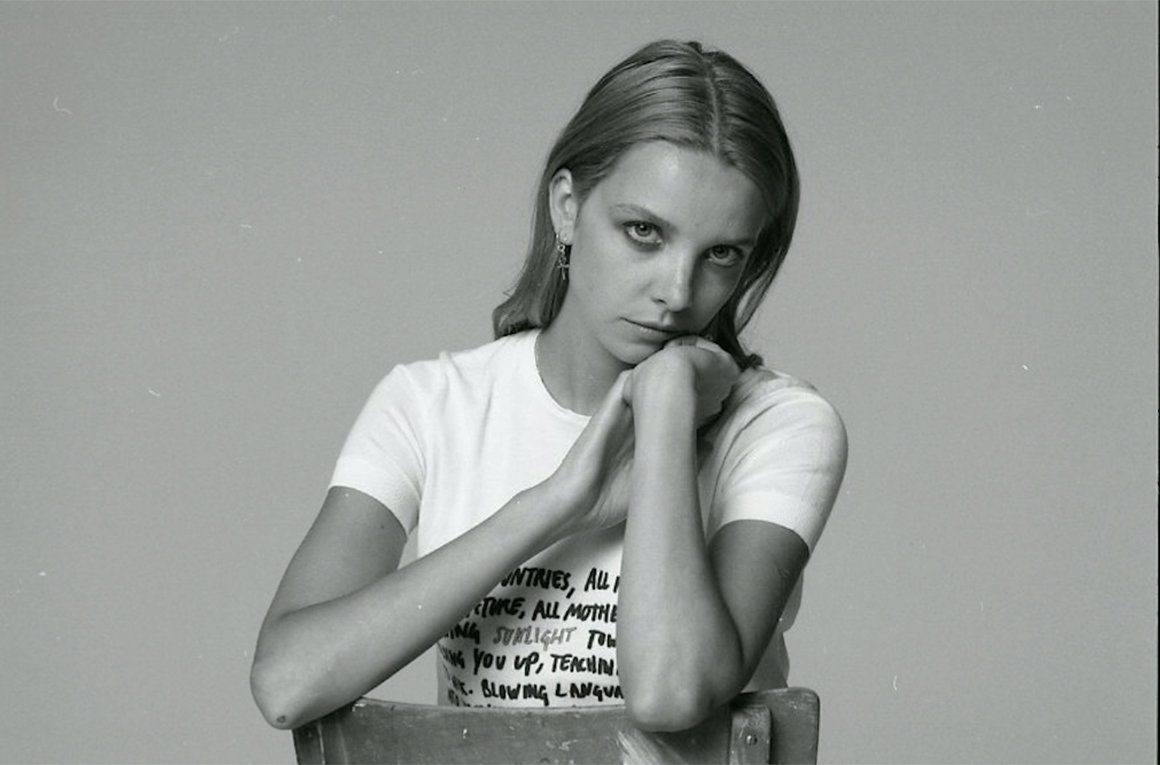
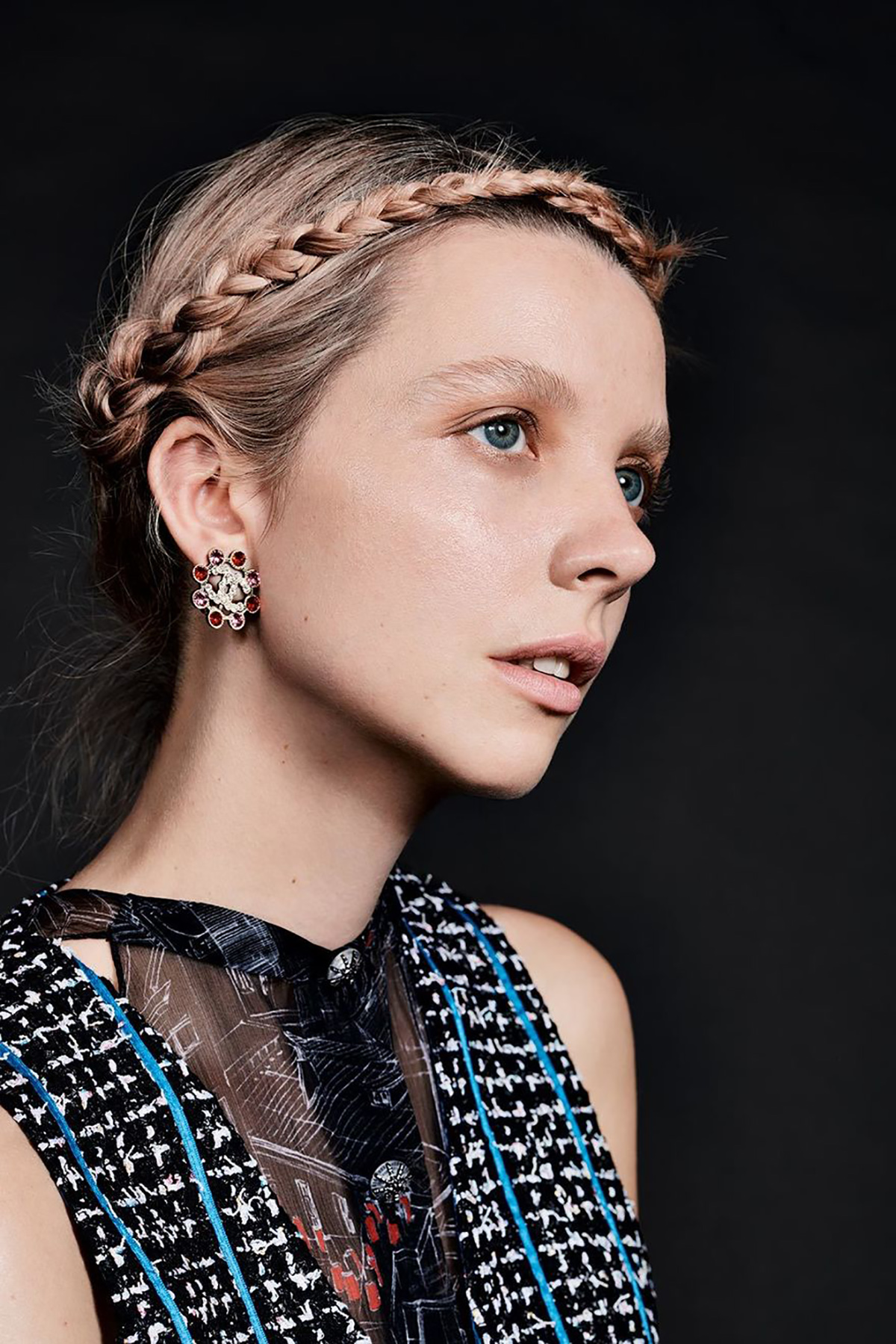
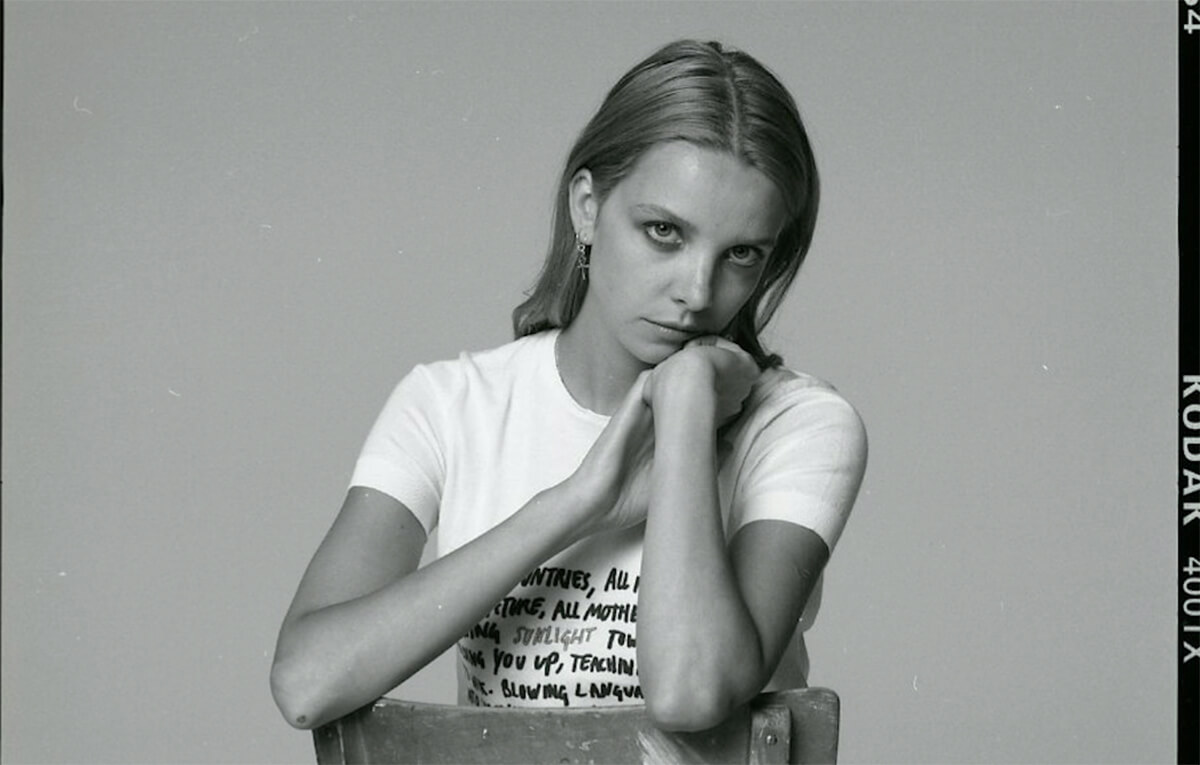





Recent Comments